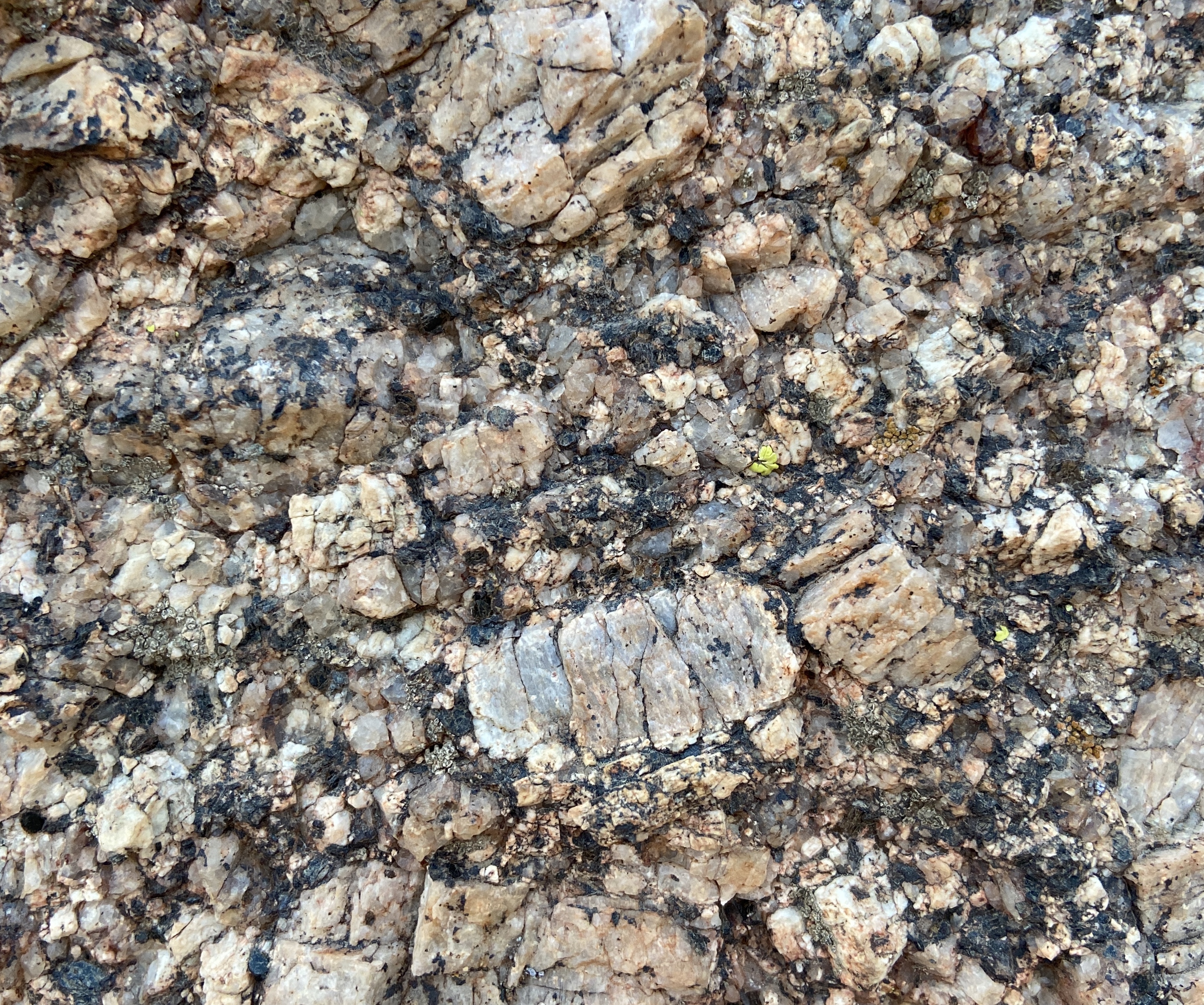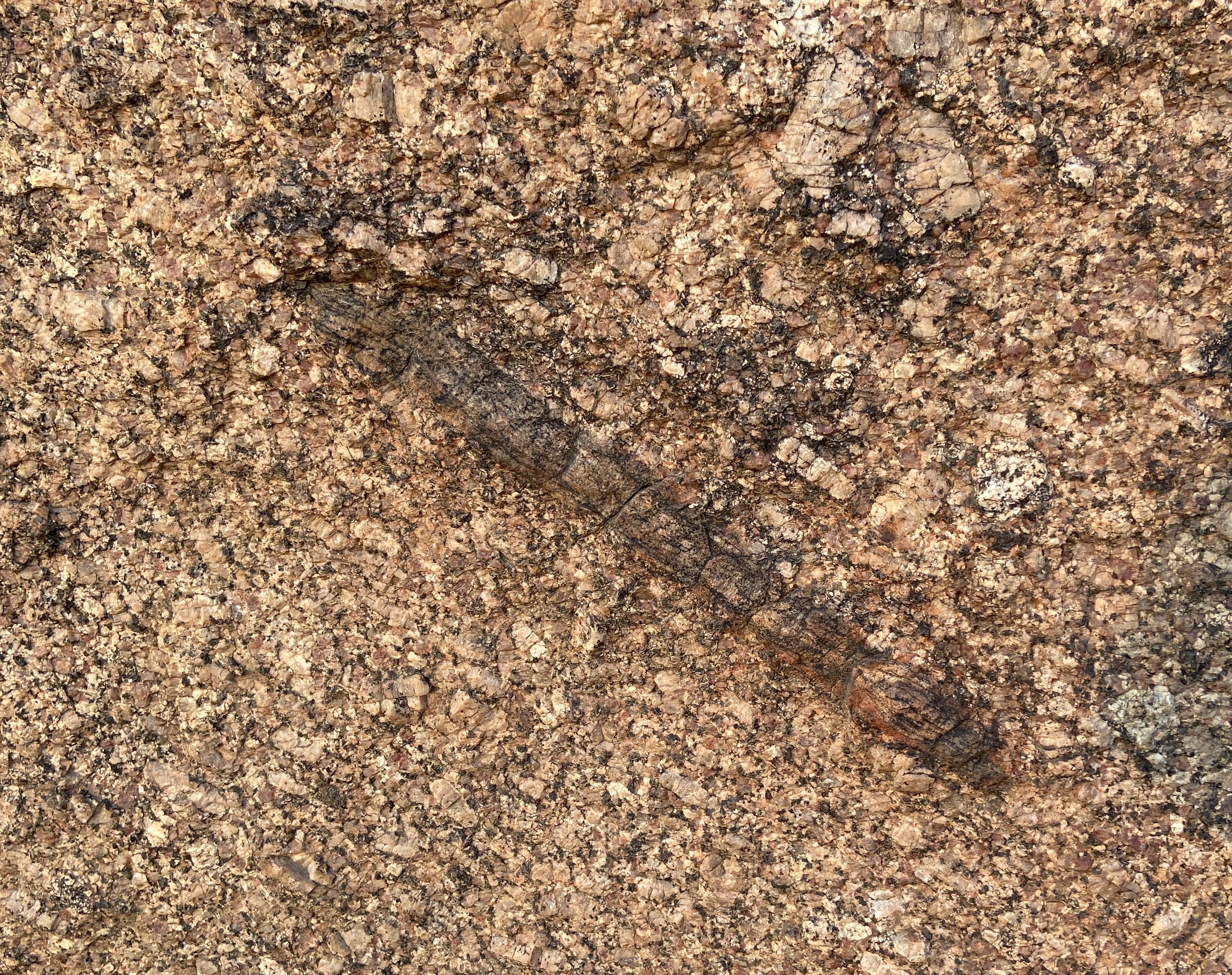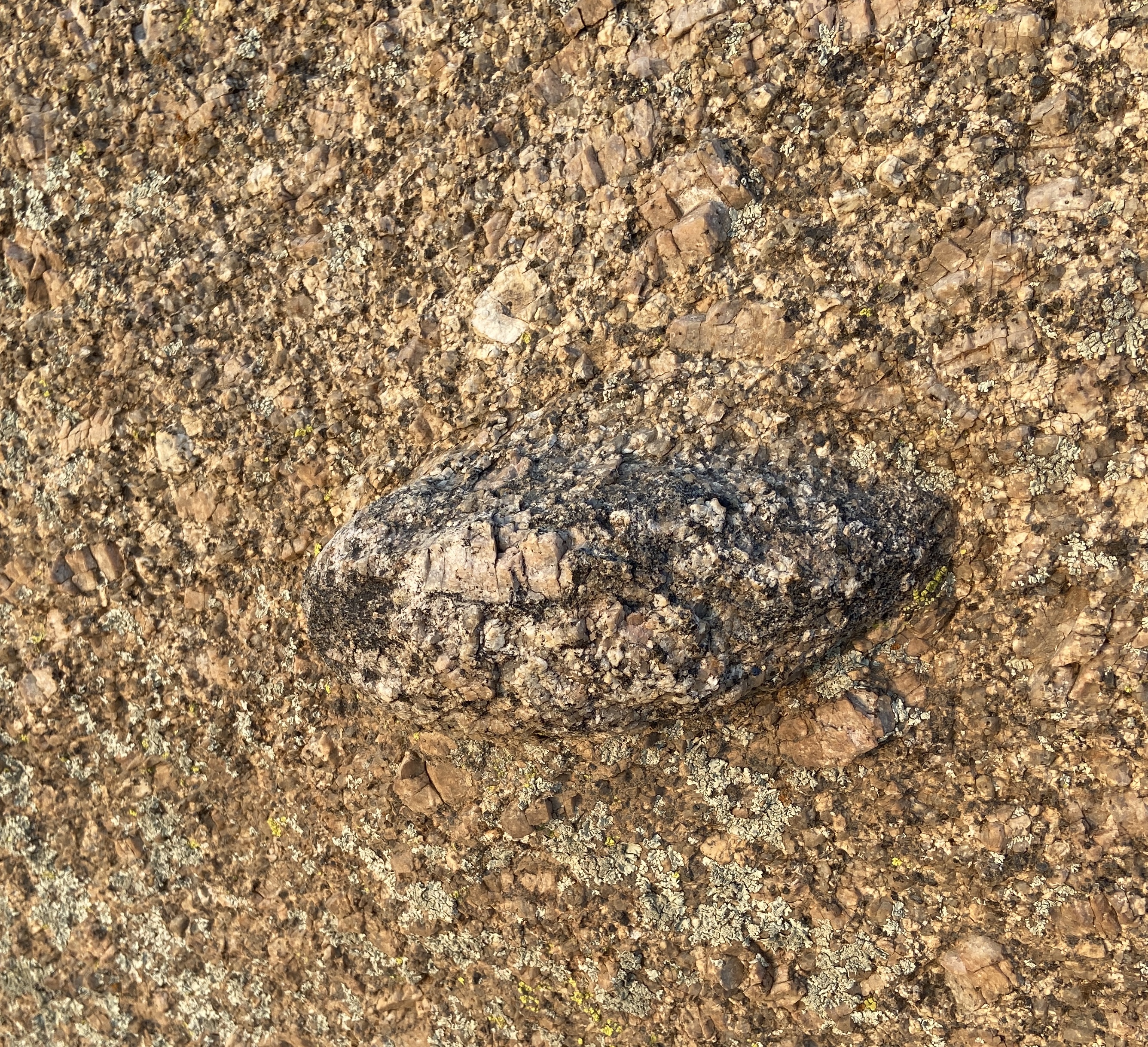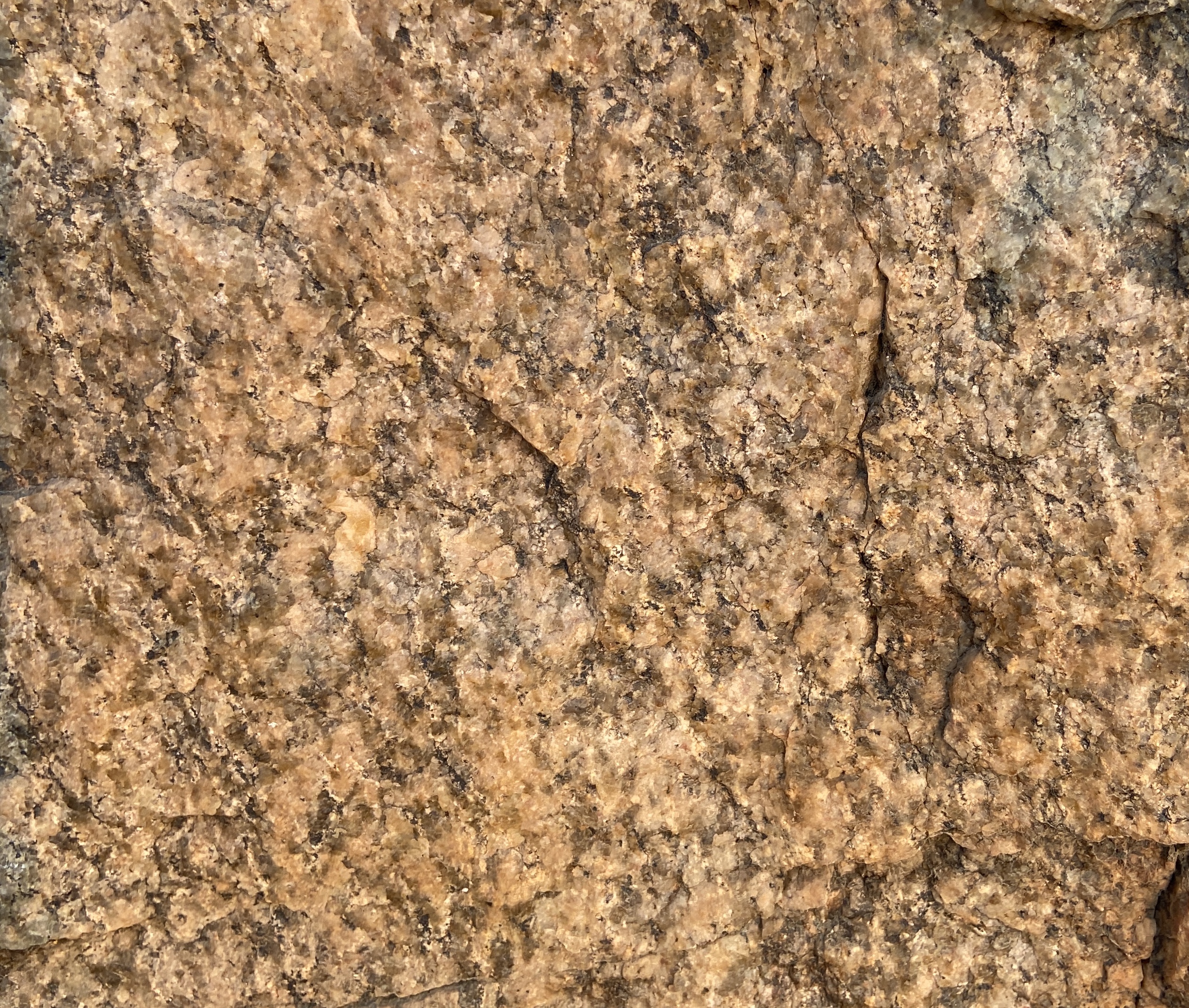There is no container associated with this cache. If you are not familiar with EarthCaches, please click here.
To earn this Earthcache, you will need to bring with you:
- Ruler or measuring tape to make measurements of what you observe
- Notepad and pen
- GPS receiver
- Water to drink on the trail
Note: trail numbers appear every 100 ft as short brown signs, for example marker 11 means you are 1100 feet from the trail head
Overview of geology of Pinnacle Peak Park (from the Pinnacle Peak Park website): Pinnacle Peak, jutting skyward 600 feet from the valley floor, is largely composed of granite. The crystallization of slowly cooling molten rock deep in the Earth formed this granite over 1.4 billion years ago. The natural forces of faulting, erosion, and uplifting of overlaying rocks have uncovered this granite. Some of the common minerals that have formed this granite are quartz, biotite mica, and feldspar. The minerals formed an interlocking pattern as the magma cooled. Water and ice, combined with the forces of gravity and the passage of time has decayed and removed some of the minerals, leaving it in the rounded boulder shapes you see today.
Magma is the generic name for molten rock within the earth. Granite, magmatic in origin, is a type of igneous rock. If the magma cools slowly, like-minerals tend to clump together to form larger crystals. If it cools quickly, there is less time for this clumping, and smaller crystals result. The term phenocryst is used for a crystal found in granite that is significantly larger than the average size crystals; in practice, these are generally > 1 mm. It is important to note that not all crystals in the rock are phenocrysts. Most slow-cooled igneous rocks have a mixture of crystal sizes. A rock with various size crystals is a porphyry. Only crystals that are substantially larger than the average size in the matrix are called phenocrysts.

As magma flows into an area underground most existing solid rock is melted into the magma or displaced. Sometimes, however, pre-existing rocks survive being melted and instead are incorporated into the magma as it cools. These ‘foreign’ rocks within the solidified granitic mass are called Xenoliths.

Xenoliths can range in size from as small as a marble to something massing many tons, and are usually quite distinctively different from the surrounding rock.
 ....................
....................
Examples of both types abound in the park. Walk along the trail about 730 feet, just past marker 7, to coordinates: N 33 43.683 W111 51.736. You will see both phenocrysts and xenoliths here.
Another good example can be found between marker 11 and 12 on the trail at coordinates N33 43.679 W111 51.769. There is a 15’x 6’ boulder on the east side of the trail about 3’ away from the path. Look at the west face of the boulder. 1) Measure the length and width of several phenocrysts. What range in size do you see here? Do not leave the trail.
Proceed further up the trail near marker 15 to coordinates: N33 43.667 W111 51.791 . On the west side of the trail, embedded in a matrix of larger phenocrysts is a squared off ~2 foot square chunk of granite that exhibits much finer crystallization.
 .................... />
.................... />
2) Measure the average size of the phenocrysts in this matrix, and tell me how that compares to your previous measurements. What can you conclude about the difference?
This granite cooled faster, resulting in finer crystals. Note how this rock appears harder with sharper angles, while the surrounding granite with larger phenocrysts is rounder and erodes more easily.
If you wish to see another excellent example of tight phenocryst formation, walk just past marker 56 on the trail to coordinates N33 43.607 W111 52.053. On east side of trail there is a large boulder with very fine phenocrysts. More of this type of rock is found further west in the park.
To earn your Earthcache:
Email me with the subject line GC29CZC Earthcache, and answer questions 1 and 2 above. Do not put the answers to these questions in your log or it will be deleted. If you do not email me the required information within 24 hours of your 'found' log being posted, your log will be deleted.
For more information on Pinnacle Peak Park, click here.
The park is located at N 33° 43.668 W 111° 51.618 and is open from dawn to dusk every day of the year except December 25. Call the office (480 312 0990) to verify exact hours. No pets are allowed in the park except service animals. Free parking is available. Please stay on the trail at all times. Allow ~30 minutes for hiking and making the required measurements to complete this Earthcache. The entire trail is approximately 2 miles one way and takes about 2 hours to hike to the end and back should you choose to do so.
Note: This cache was developed with the permission and cooperation of Pinnacle Peak Park and the City of Scottsdale. No caches may be placed in the park without such prior written consent.
References:
http://en.wikipedia.org/wiki/Phenocryst
http://en.wikipedia.org/wiki/Xenolith
http://geology.com/dictionary/glossary-x.shtml
All photos were taken by the author in Pinnacle Peak Park